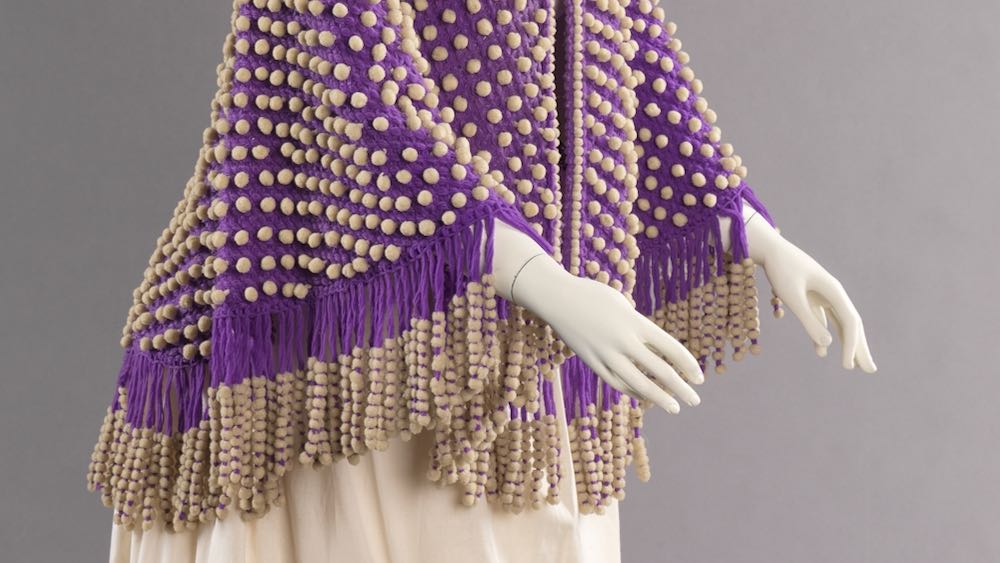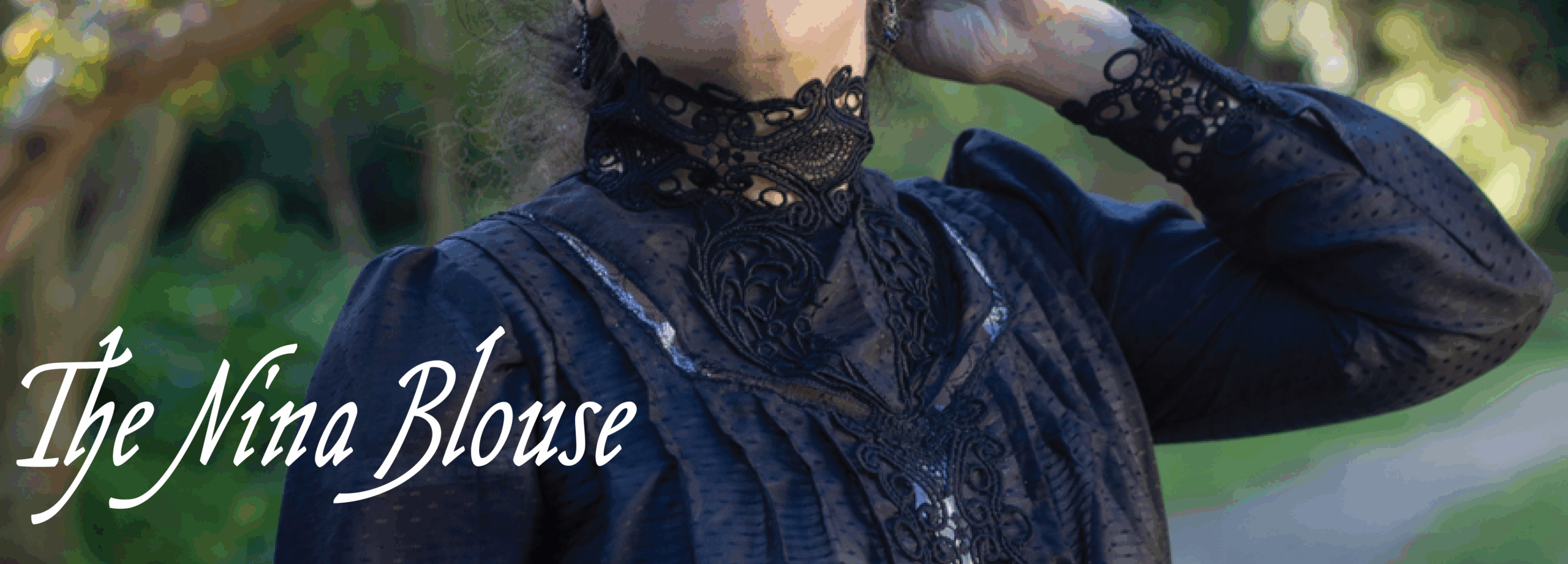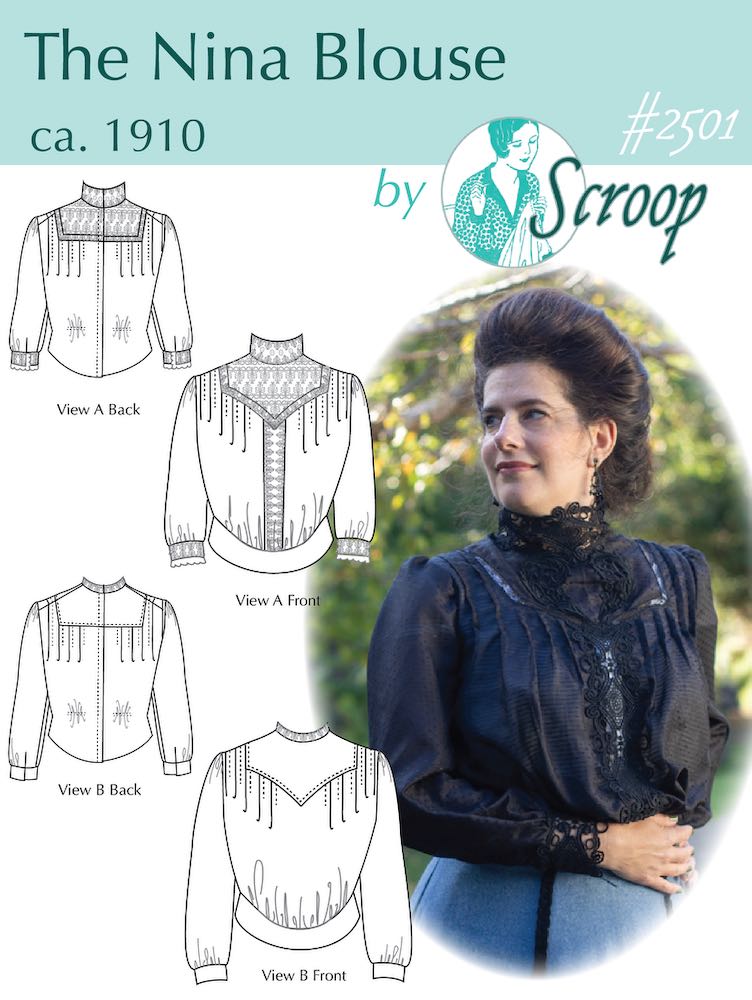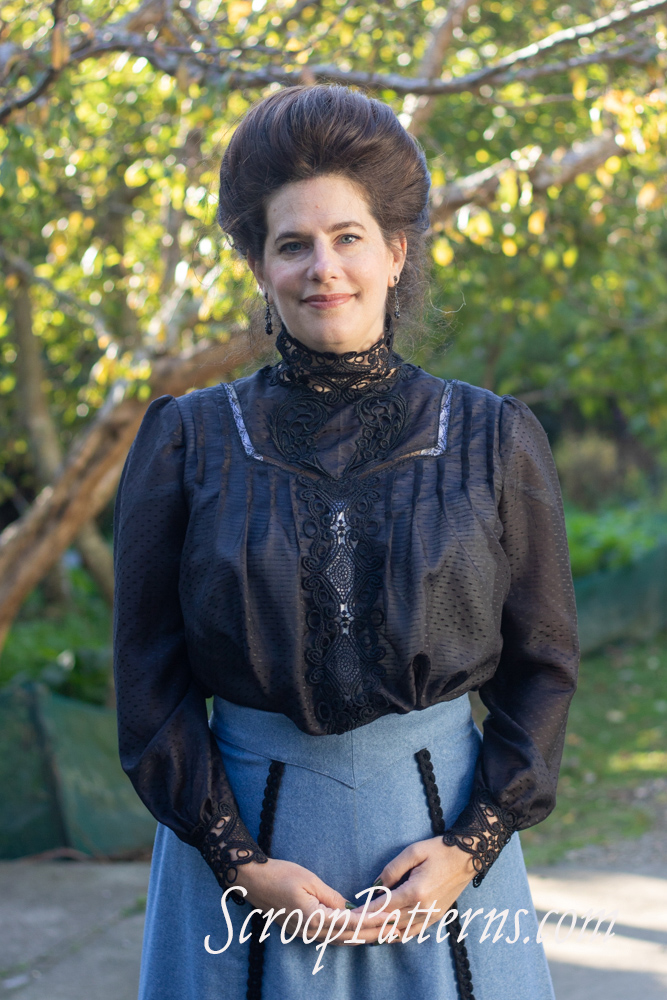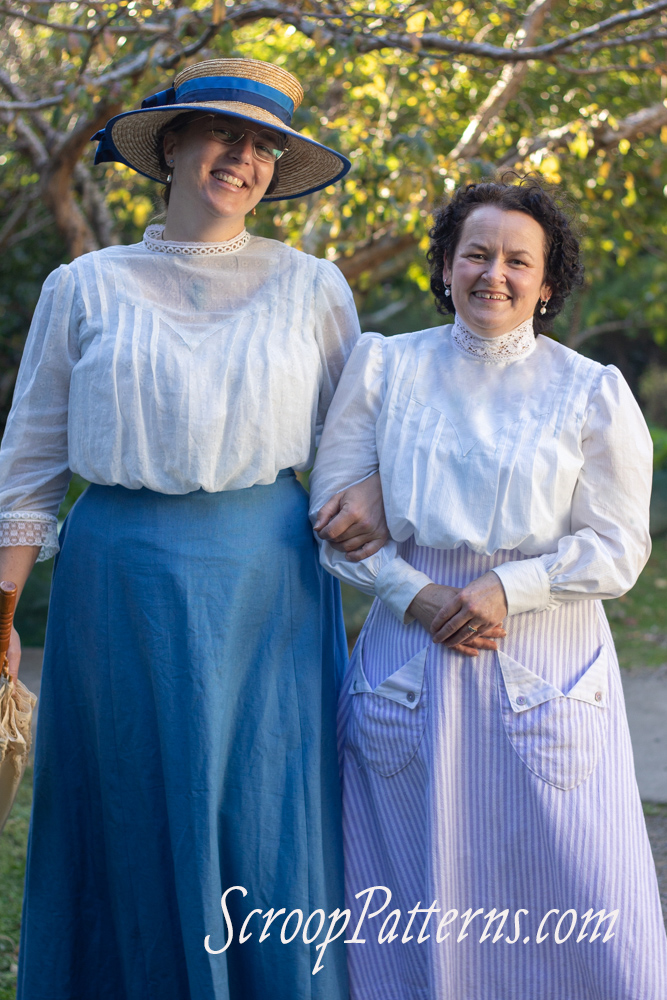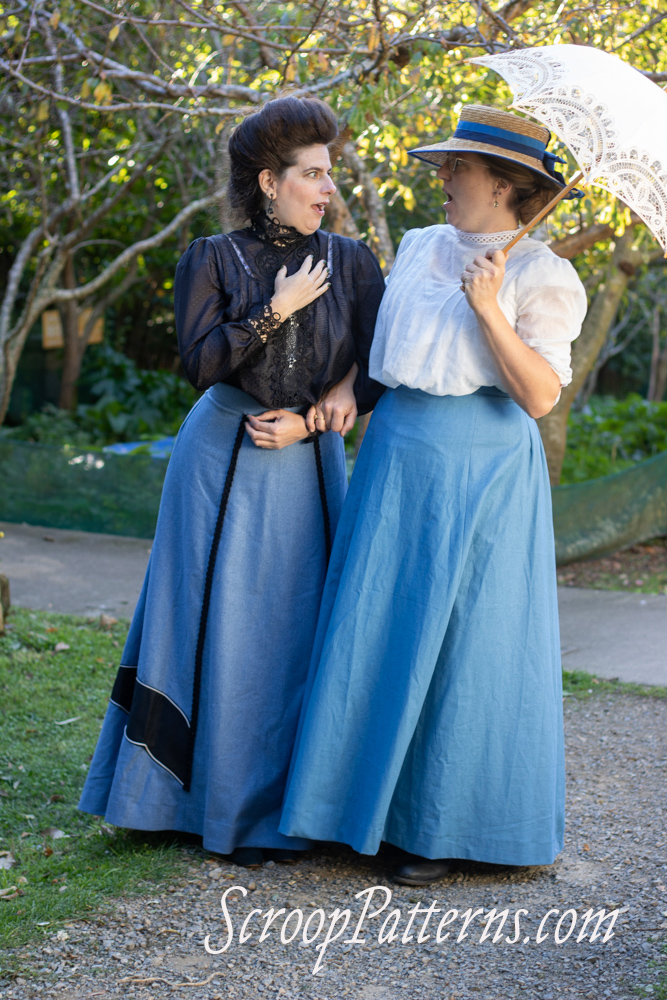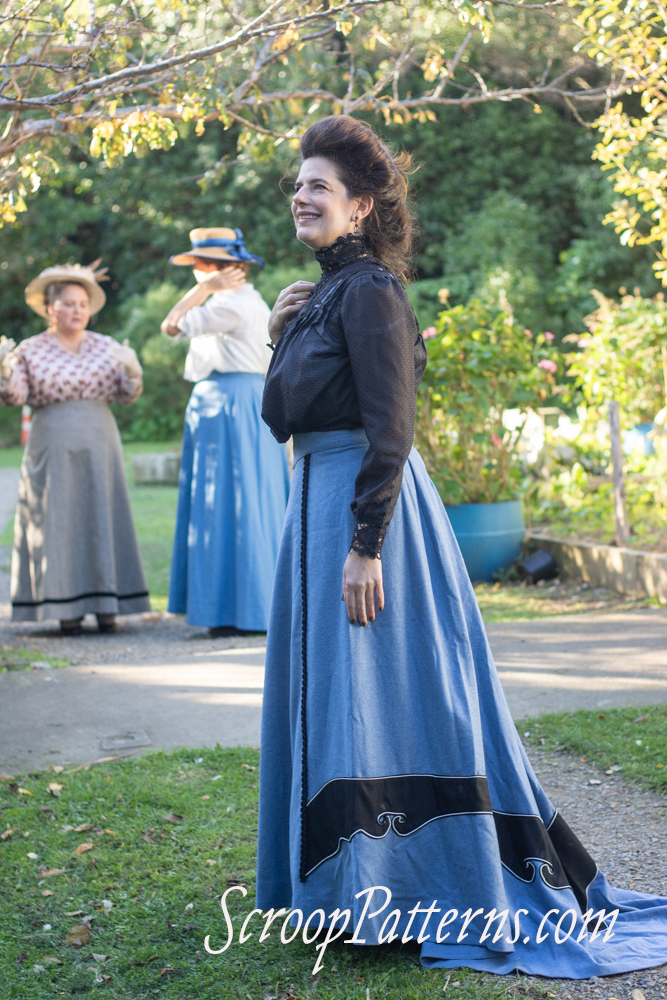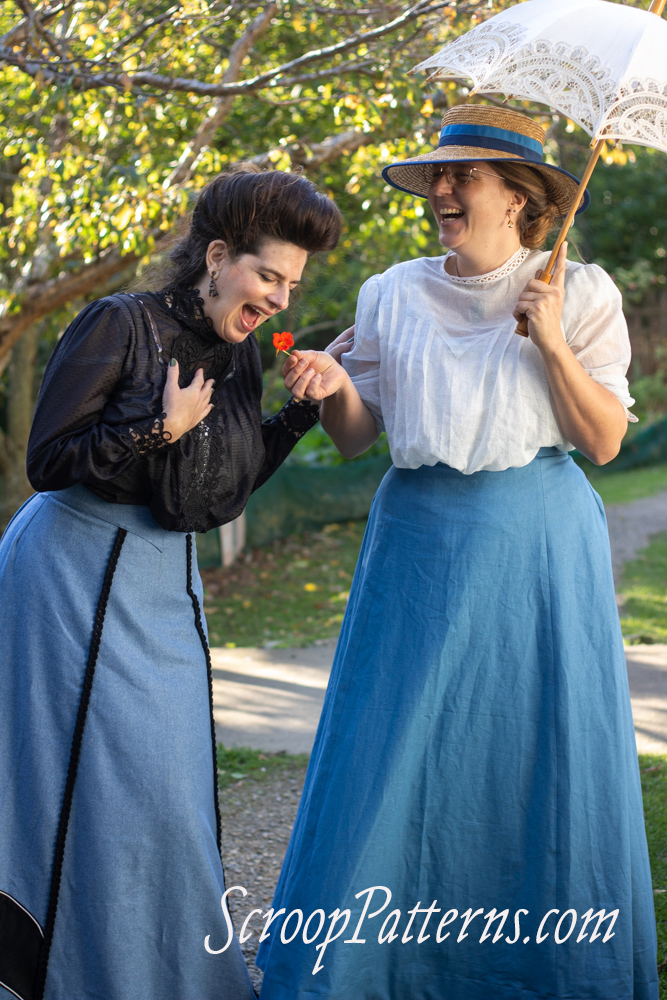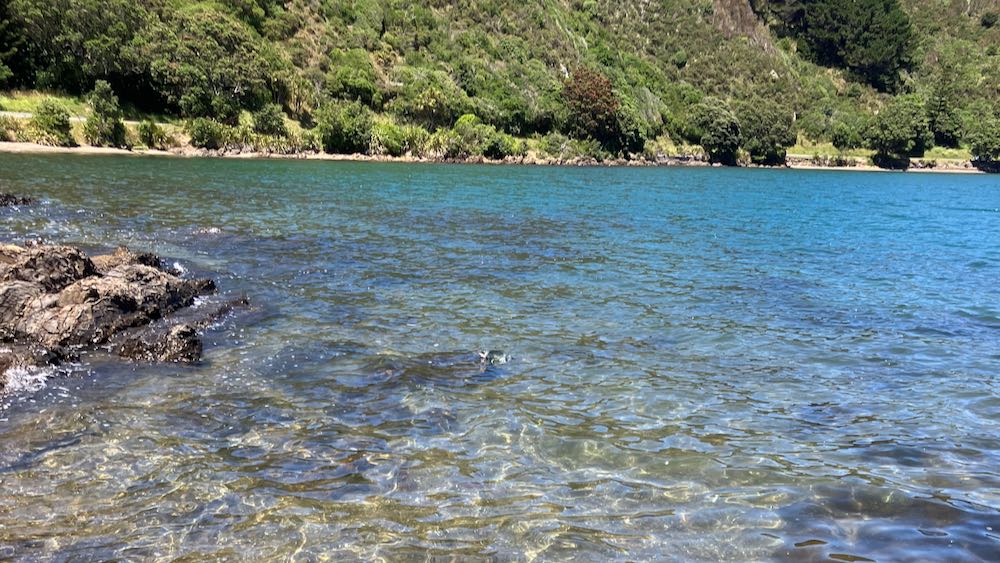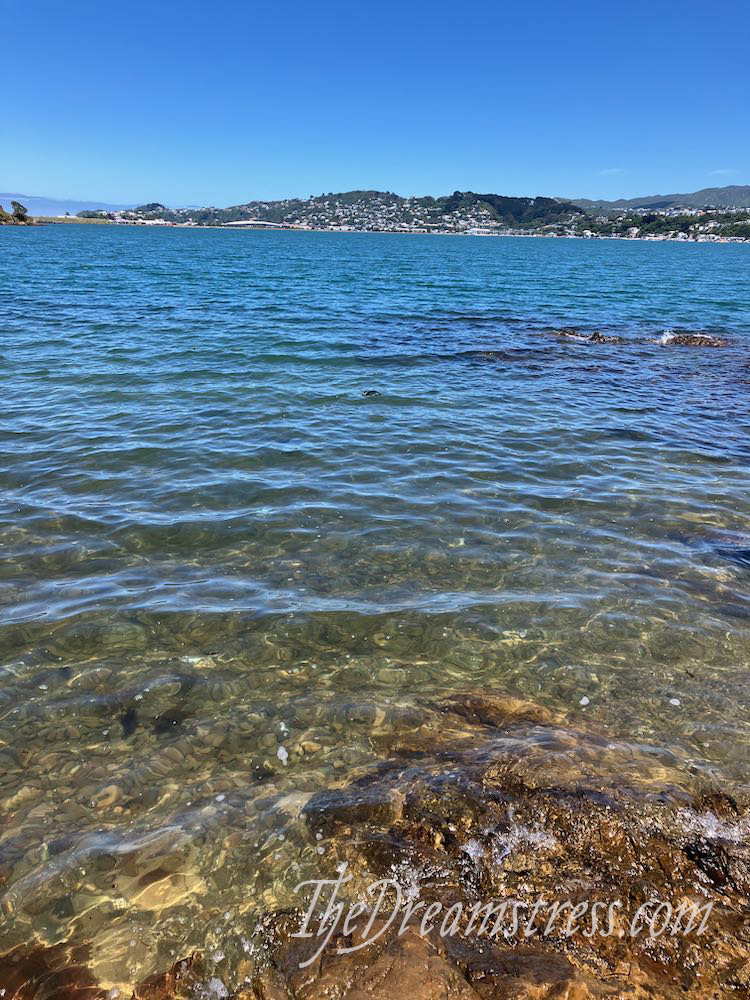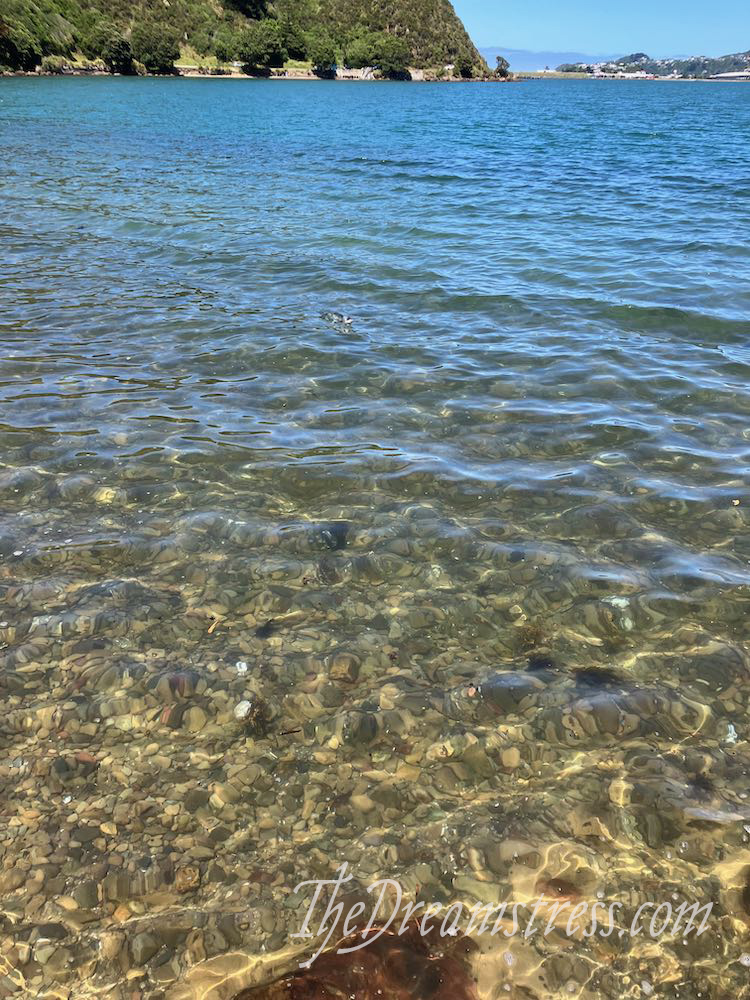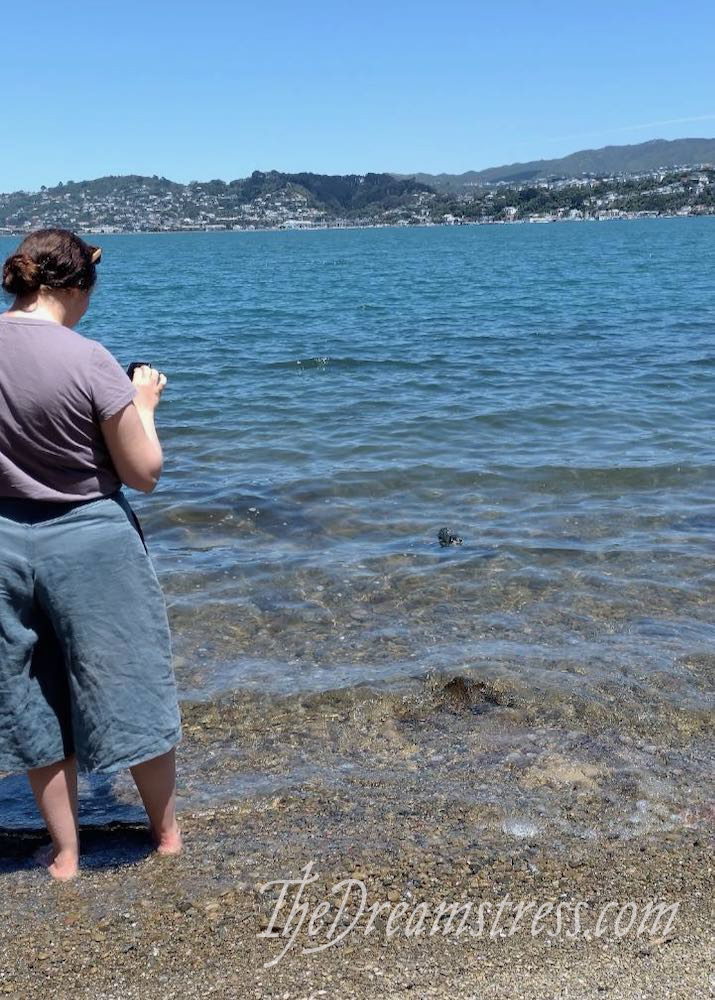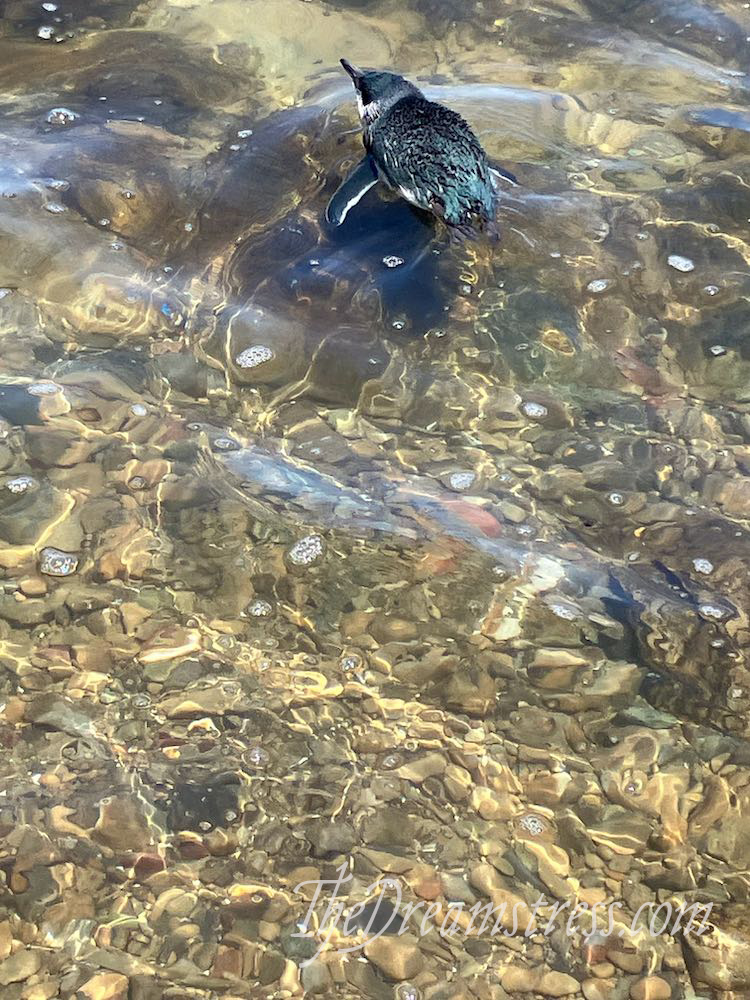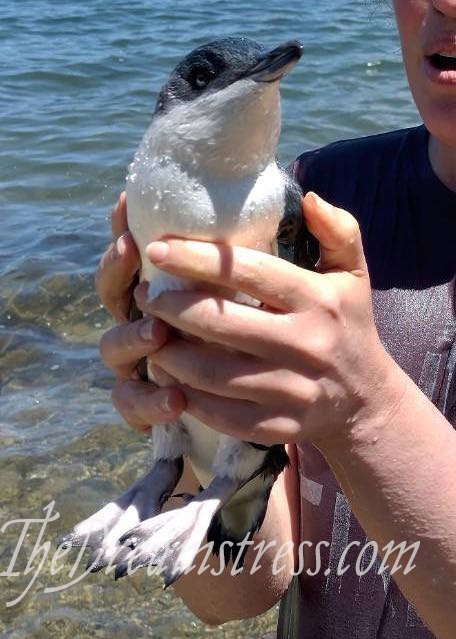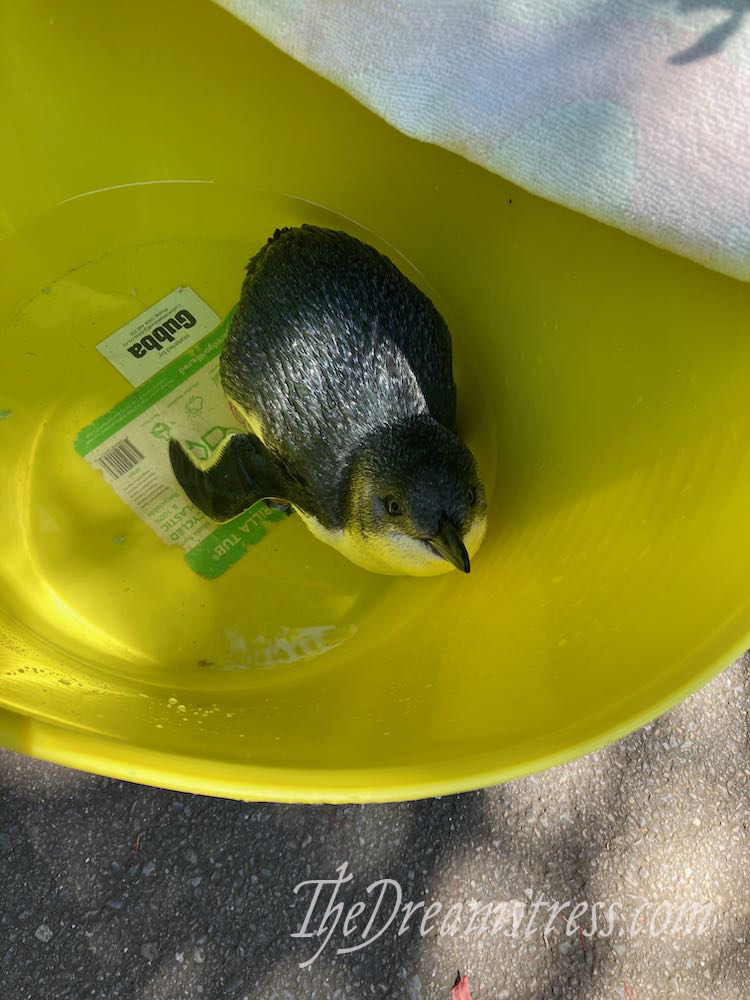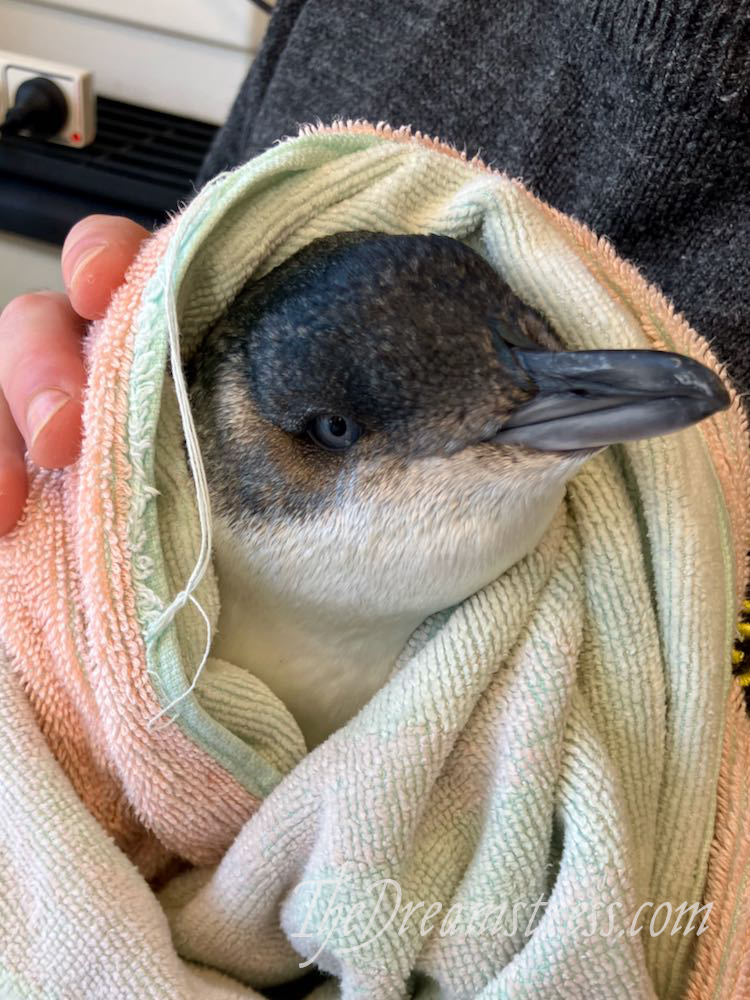I haven’t done a Rate the Dress since last October. And the time before that was July. And I can’t promise the next one won’t be July again, or worse. But I can hope and try.
And today’s pick is just too unique and fascinating not to show you!
Last time: A 1908 Paquin ensemble
Ratings were all over the place for the Paquin ensemble. First there was a solid runs of 8s and 9s, and then a perfect 10, and then 4 and 1 and 6s! Every rating but a 5, so I guess no one thought it was average.
Huge thanks to Daniel for identifying the original design it was based on!
The Total: 7.3 out of 10
Not great. But it leads so well into today’s post…
This time: A 1873 cape in aniline purple with bobbles
Today’s Rate the Dress isn’t a full ensemble. It’s just a cape.
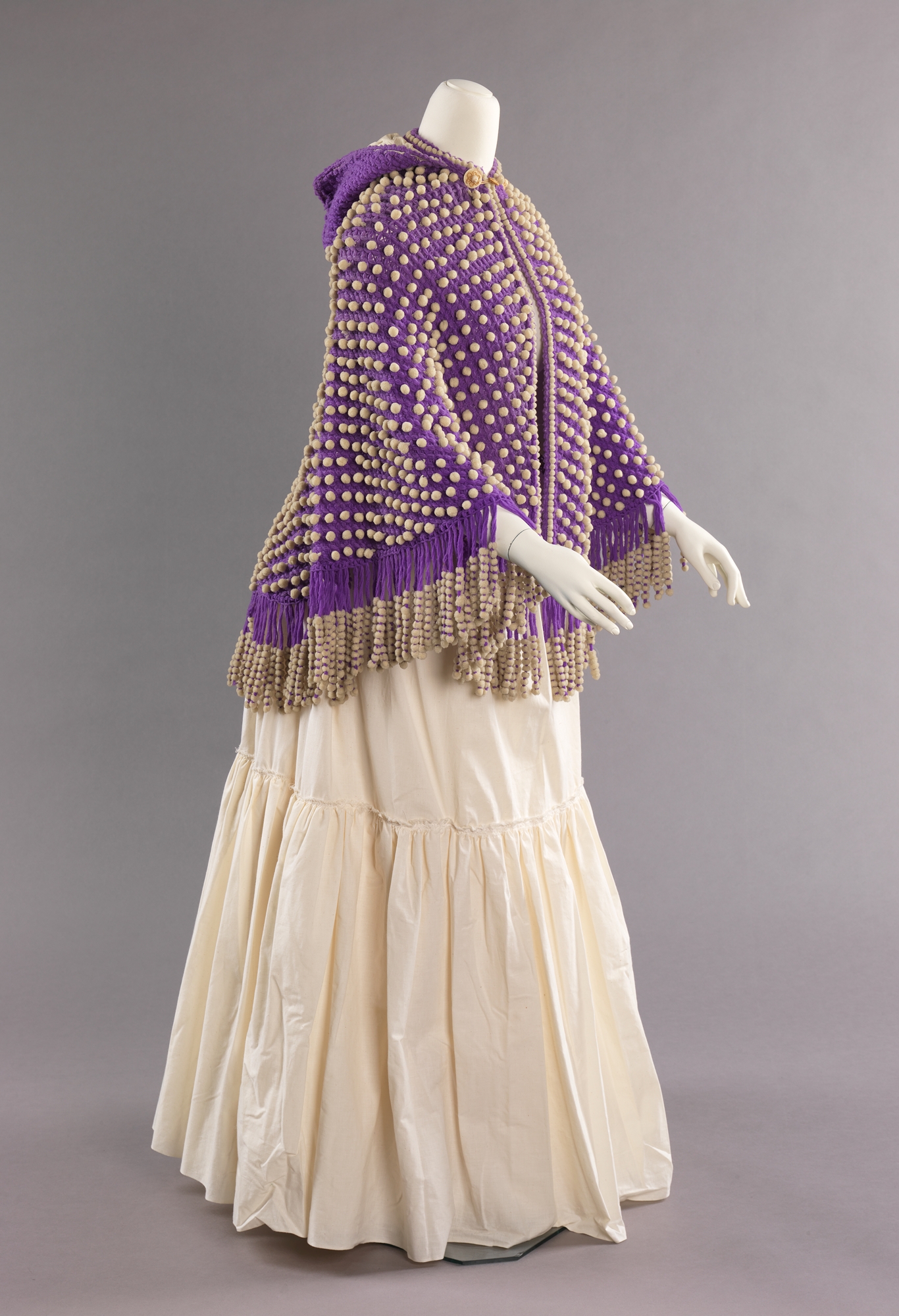
Cape, 1873, American, wool, Brooklyn Museum Costume Collection at The Metropolitan Museum of Art, 2009.300.2732
But oh, what an interesting cape!
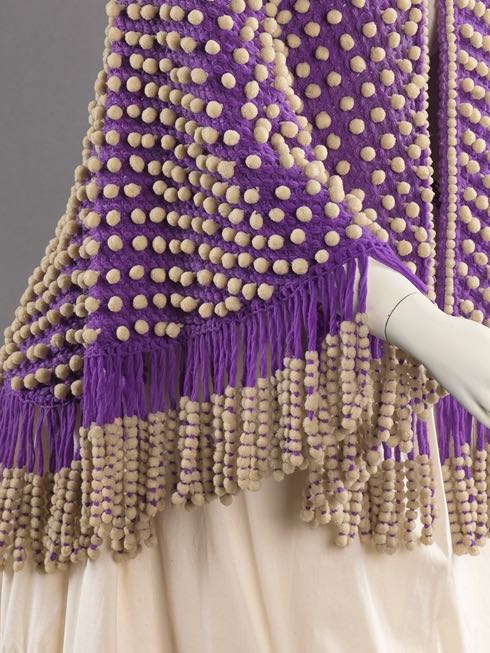
Cape, 1873, American, wool, Brooklyn Museum Costume Collection at The Metropolitan Museum of Art, 2009.300.2732
It’s knitted from purple wool dyed with one of the newly invented and very fashionable aniline dyes, and decorated with bobbles in ivory wool.
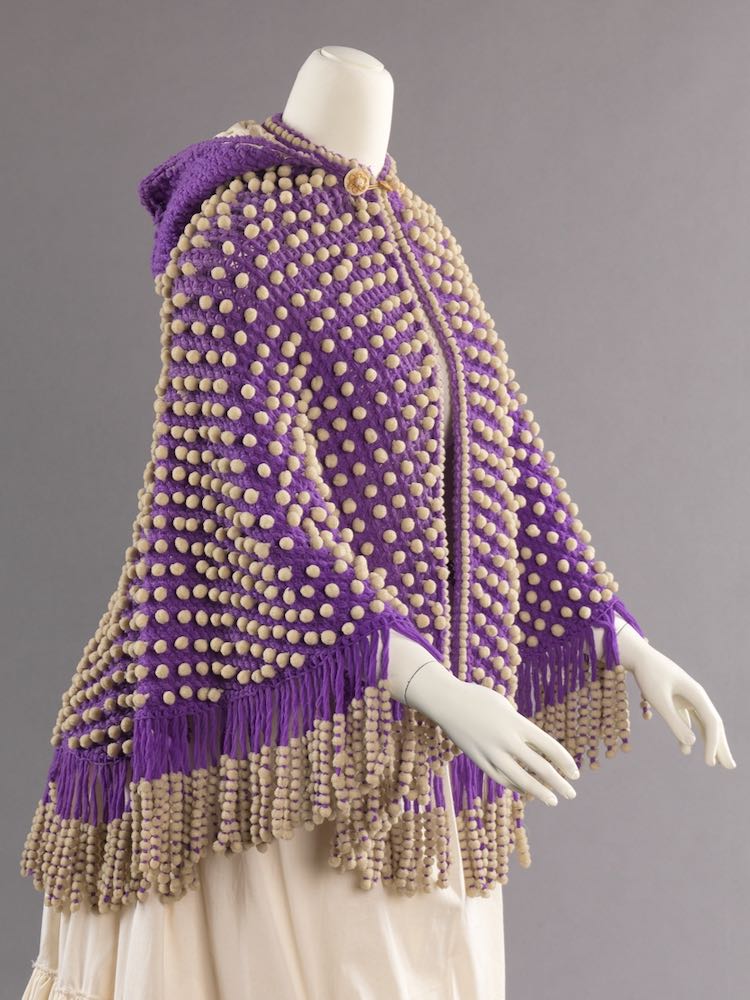
Cape, 1873, American, wool, Brooklyn Museum Costume Collection at The Metropolitan Museum of Art, 2009.300.2732
It’s definitely one of those things that if you saw in a period film you’d assume the costume designer had lost their marbles.
It’s so ’70s!
And actually ’70s.
(I guess some decades never change, no matter the century)

Cape, 1873, American, wool, Brooklyn Museum Costume Collection at The Metropolitan Museum of Art, 2009.300.2732
The colour and bobbles remind me of ube boba tea.
(and now I’m having an absolute 12 year old boy brain moment, because boba means nipples, so it’s the nipple cape with nipple tassels. I think it might be bedtime…)
To give you an idea of what it might have been worn over, here are some early 1870s fashion plates:
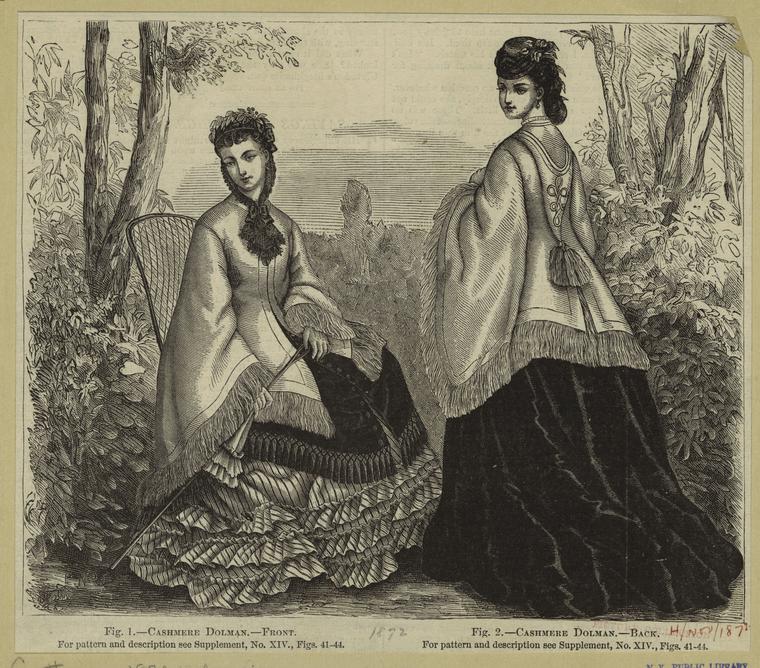
Woman’s dolman mantle, front & back views. Harper’s Bazaar, November 1871
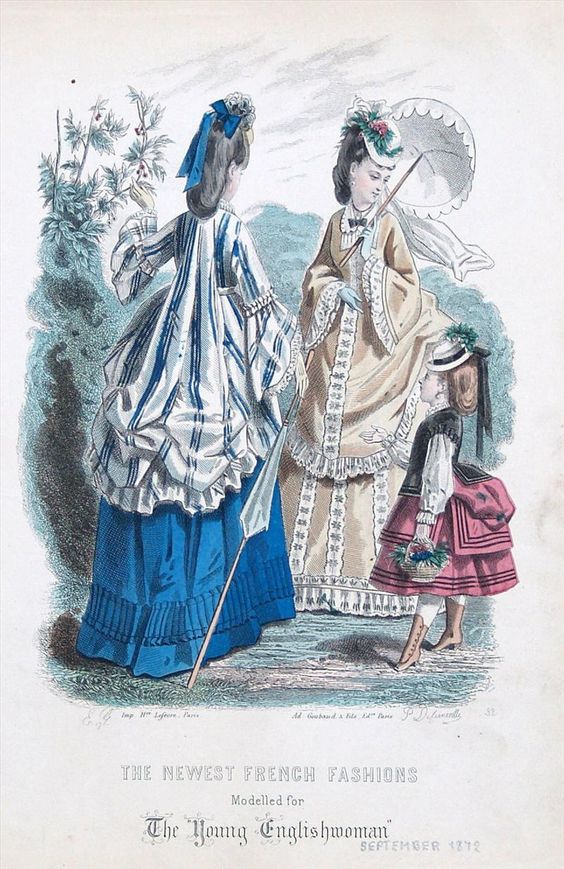
A dress featuring a ‘Watteau’ back, September, 1872 – The Young Englishwoman
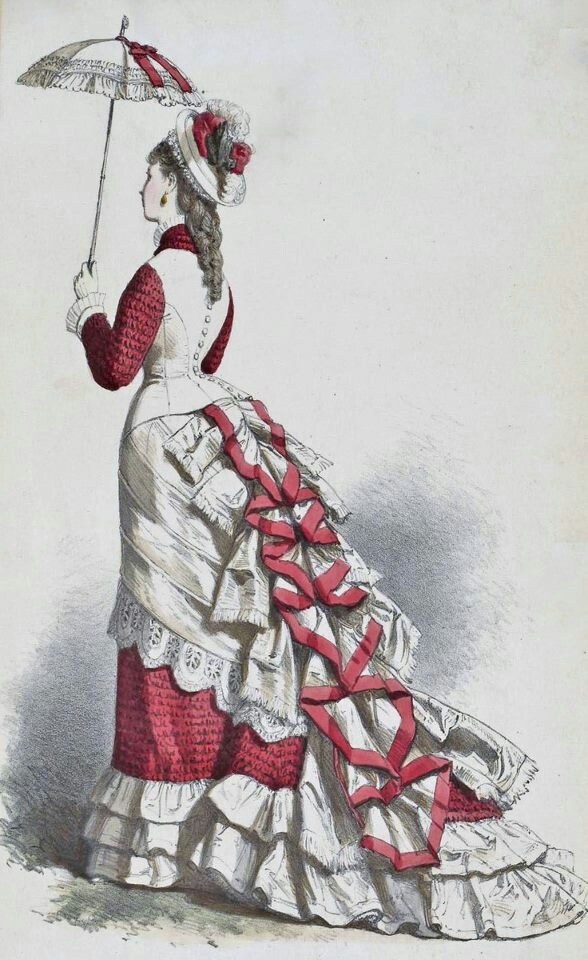
Fashion plate, 1875
What do you think? A fun and cozy addition to an early bustle era wardrobe? Or just a little weird?
Rate the Dress on a Scale of 1 to 10
A reminder about rating — feel free to be critical if you don’t like a thing, but make sure that your comments aren’t actually insulting to those who do like a garment. Phrase criticism as your opinion, rather than a flat fact. Our different tastes are what make Rate the Dress so interesting. It’s no fun when a comment implies that anyone who doesn’t agree with it, or who would wear a garment, is totally lacking in taste.
As usual, nothing more complicated than a .5. I also hugely appreciate it if you only do one rating, and set it on a line at the very end of your comment.

